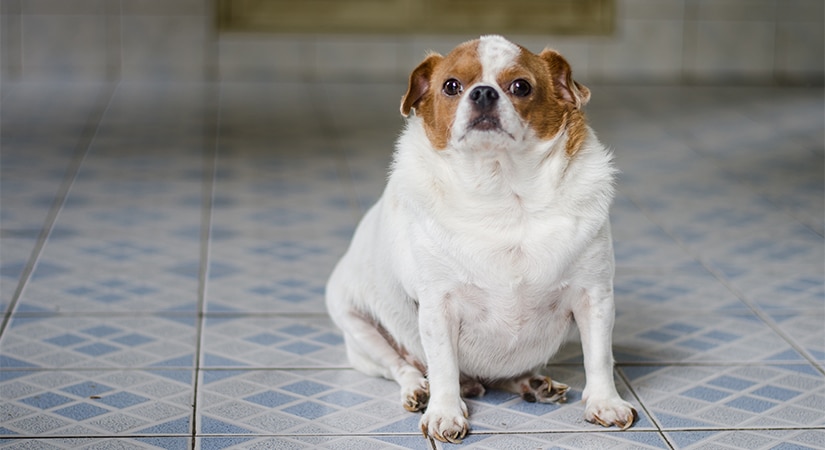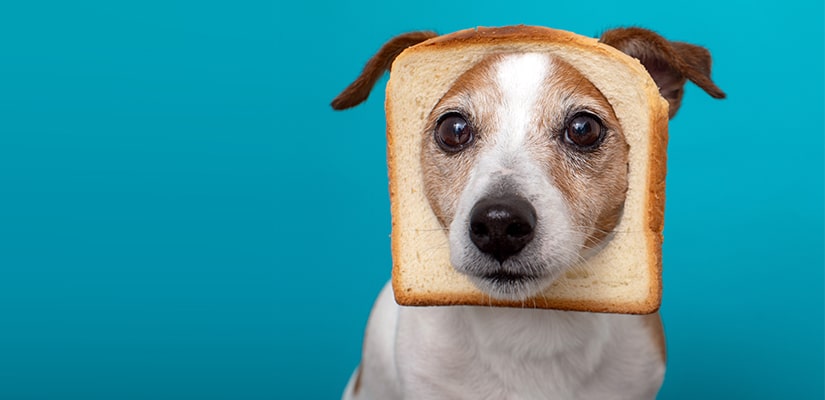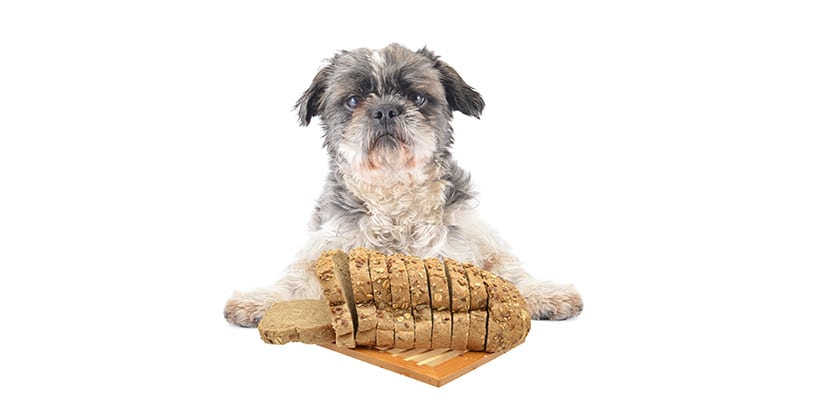Many of us aren’t sure as to what types of bread dogs can eat safely. There are many different types of bread made from flour, water, and yeast. Bread is also known for its high carb content and for causing obesity in dogs if fed in large quantities.
When it comes to health, pets are like people yet cannot eat all the same foods that humans can. If you worry about whether you should be feeding your pup bread, it goes without saying that eating right, getting plenty of exercise, and eliminating bad habits apply to our pets as well. Regardless of the breed of dog you own, when in doubt about what’s safe for your dog to eat, ask your veterinarian.
As pet parents, we enjoy croissants, baguettes, bagels, and raisin bread-especially when it’s paired with another breakfast item like cream cheese, jams, or eggs and sausage. We’re also prone to sharing with our furry best friends.
So you’re probably wondering if bread is OK to share with your furry best friend? In this blog, we’ll discuss what you should watch out for and if dogs can eat bread?
Can Dogs Eat Bread?
You may think that a few pieces of bread wouldn’t be harmful to your dog. Still, too much bread can hurt your dog’s health because of toxic ingredients, in particular, bread with raisins. Your dog also could have an allergic reaction to wheat – not to mention the extra calories in bread that your dog may not be able to burn off. Bread can also cause your dog’s stomach to expand, which can be very painful and increase your vet visits.
Obesity

Obesity affects pets the same way as it does people. If you’re continually feeding your pup white bread, he may pick up weight and be more prone to the following diseases:
- Diabetes
- Kidney disease
- Liver disease
- Heart disease
Your pup may also tire more easily and become sluggish. Dogs can even may crave more and more food. By feeding your dog indiscriminately, you may be promoting obesity. This includes table scraps, too many snacks like bits of sandwich or white bread. Not only does this affect the balance of your dog’s nutritional requirement, but it can cause gastrointestinal upset’s too. If you keep feeding white bread snacks and other tidbits, you’ll end up with a pet that continuously begs or scavenges for food.
If your dog is overweight, merely cutting back on snacks and the amount of food you feed may not be enough. Ask your veterinarian for a recommendation and increase your exercise schedule.
The American Kennel Club (AKC) adds that”Feeding your dog bread as a treat now and then won’t hurt her, as long as she is also fed a complete and balanced diet and gets plenty of exercise. It also won’t help her. Bread is essentially a filler food and does not contain any nutrients that are not already supplied by your dog’s food.”
AKC says that dogs can consume bread safely as long as it is eaten in moderation and that plain white bread is generally safe for dogs to eat if dogs don’t have allergies and no stomach upsets.
Raw Bread Dough
Although the risks are minimal and bread in itself is not toxic, here’s what you need to know.
Merck’s Veterinary Manual explains that “Raw bread dough made with yeast poses mechanical and biochemical hazards when ingested, including gastric distention, metabolic acidosis, and CNS depression. Although any species is susceptible, dogs are most commonly involved because of their indiscriminate eating habits.”
They add that the dog’s warm and moist environment in a dog’s stomach allows the bread dough to rise. Next, the expanding dough mass causes the stomach to distend, resulting in vascular compromise to the gastric wall similar to that seen in gastric dilatation/volvulus.
If your dog shows signs of toxicoses, you should call your vet immediately.
Under What Conditions Can Dogs Eat Bread?

Although some people say that bread is safe for dogs to eat, some bread may have toxic ingredients unsafe for dogs to consume. This includes the following ingredients:
- Raisins & onions
- Garlic
- Macadamia nuts
- Xylitol
- Chocolate chips
- Assorted nuts
- Sugar
Before feeding your dog bread, you should read the ingredients list to ensure that no toxic ingredients are listed. Although bread is a filler food and basic white or whole wheat bread is OK for dogs if they don’t have allergies, you should feed it as a treat now and then. It should never replace regular dog food because it contains only carbohydrates, leading to obesity in dogs.
Before feeding bread to your pup, here’s what to look out for:
- Check your dog’s allergies – make sure you’re not feeding your dog bread made with wheat if your dog’s allergic to gluten
- Check your dog’s weight – make sure you don’t add hundreds of calories to your dog’s diet with too much bread
- Check ingredients in bread you give your diabetic dog – there may be too much sugar in specifically prepared bread which could be harmful
- Keep bread dough out of your dog’s reach – yeast in bread dough is toxic to your dog and could expand inside your dog’s stomach, which may result in ethanol toxicosis.
- Constipation relief – Give your dog a piece of bread to ease the discomfort of constipation
- Note: Can dogs eat bread? Give your dog a piece of bread as an occasional treat – details should be tiny because of calories and high glycemic punch.
8 Symptoms of Ethanol Toxicosis
- Distended abdomen from gassiness with vomiting or unproductive retching
- Loss of coordination
- Loss of bladder control
- Barking and other strange vocalization
- Behavior changes and depression
- Weakness
- Seizures
- Coma
Special Note: If you suspect that your dog has eaten bread dough, you should call your veterinarian immediately. Your dog may show symptoms within 30 minutes; however, signs of ethanol poisoning can take 2 hours. If your dog’s ethanol level keeps rising, cardiac arrest can follow and be fatal.
Can Dogs Eat Bread? Bread That is Safe for Dogs

If your pup has an upset stomach, a tiny bit of plain toast together with boiled chicken and rice is fine. White bread can lead to bloating and cause more of a stomach upset. On the other hand, if you suspect that your pup has swallowed something sharp like a shard of beef bone, bread may serve as padding against intestinal perforation.
If your dog is vomiting or vomiting from bowel issues, you should ask your vet about adding fiber-rich bread to his diet. Here’s the take with bread:
- Homemade bread with safe ingredients for your dog are the healthiest choice
- Substitute wheat flour with rice or rye flour if your dog is allergic to wheat
- Make sure you don’t feed your dog any bread containing added sugar, raisins, and nuts, which are toxic to dogs.
Some veterinarians add that feeding your dog even tiny bits of bread encourages begging at the dinner table and that it may encourage an ongoing habit. Bread may also contain sugar which is bad for dogs.
Here are some bread, croissant, and bagel mixes that you should never feed your dogs:
- Nut bread/bagel/croissant
- Raisin bread/bagel/croissant
- Chocolate bread/bagel/croissant
- Banana bread that most often contains nuts and chocolate chips
- Onion & garlic bread/bagel
- Toxic or moldy bread may pose a substantial toxic risk to dogs.
Final Thoughts
Bread is always available in homes, but instead of feeding your dogs a slice of bread, opt for fresh baby carrots or blueberries as a snack. Although plain bread is harmless, there’s no nutritional benefit in feeding dogs bread. If your pup has an upset stomach, try a bland diet of boiled chicken and rice. You can also use a bland slice of bread for an upset stomach, but it should not substitute a meal.
